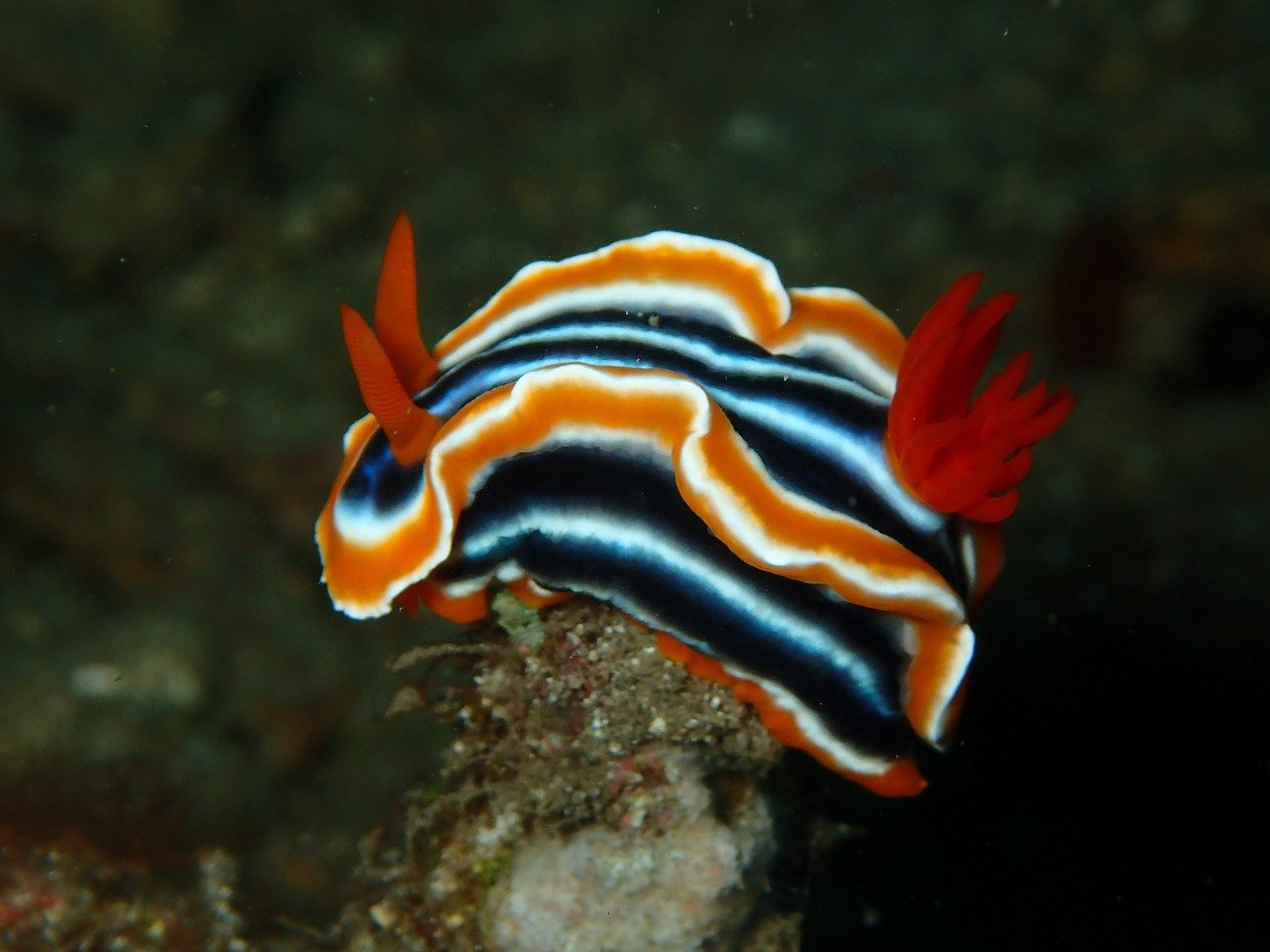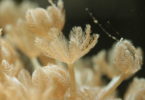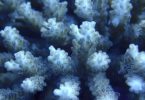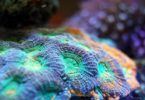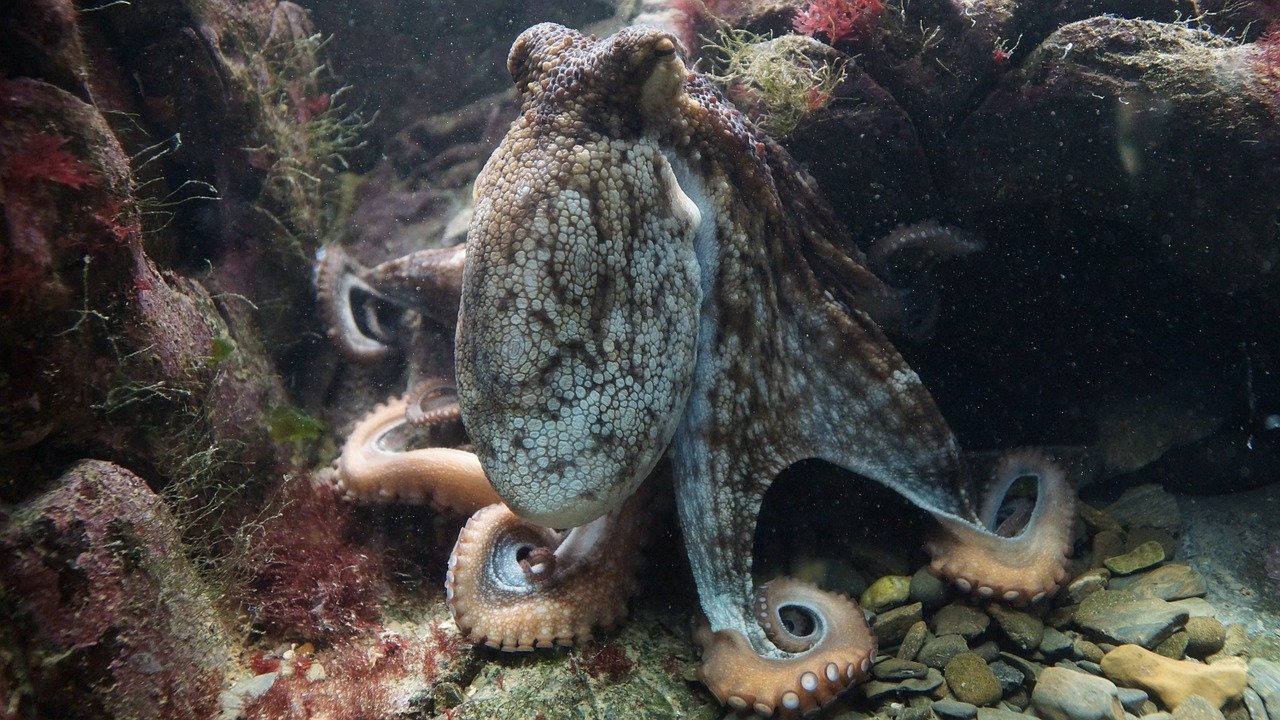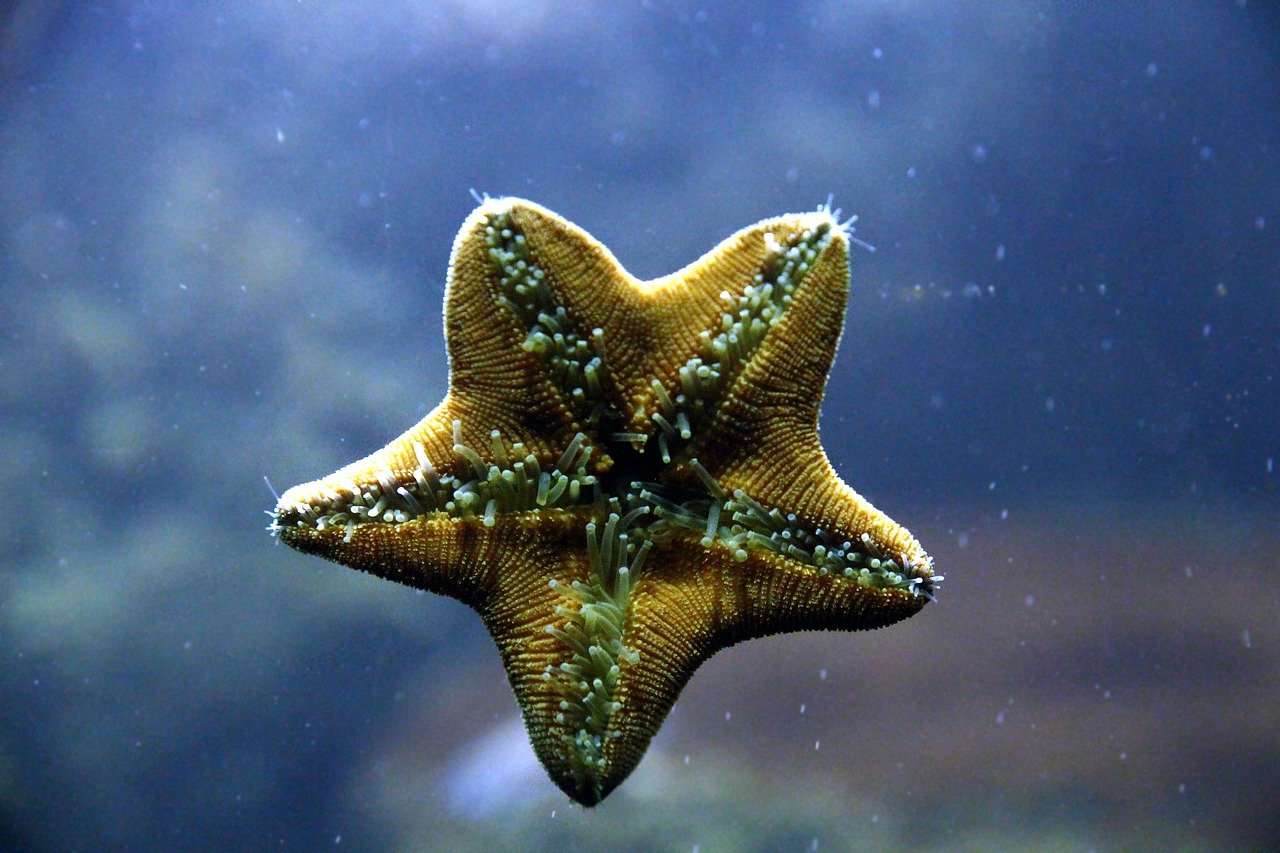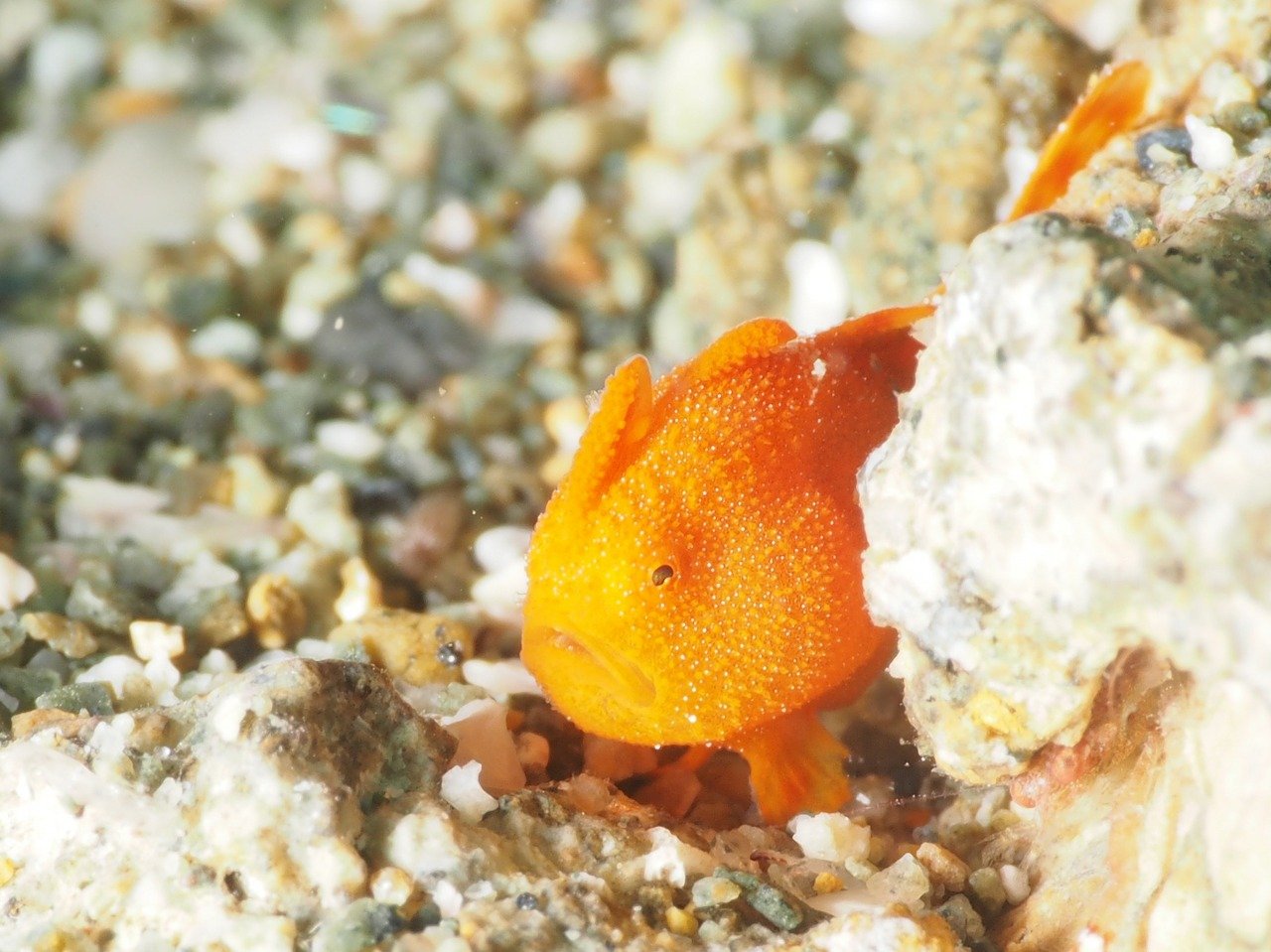Last Updated on November 19, 2022 by Matt
Nudibranchs are marine gastropod mollusks in the order Nudibranchia. There are around 3000 species currently identified, grouped into two main suborders Euctenidiacea and Dexiarchia. The name nudibranch is derived from the Latin and Greek words meaning ‘naked’ and ‘gills’. This name references the fact that they have external gills.
When the term ‘sea slug’ is used it is usually the nudibranchs that are being referenced, as they are shell-less marine mollusks and the order is so large and diverse. However there are a couple of other marine mollusks that lack shells and so resemble slugs and are often called sea slugs as well, namely the Sacoglossa, or sap-sucking sea slugs, and the Aglajidae, the headshield sea slugs.
The nudibranchs are a genuine taxonomic classification of organisms, while the general term sea slug is given to the opisthobranchs, which is an informal classification encompassing all marine mollusks lacking a shell.
Therefore all nudibranchs are sea slugs, but not all sea slugs are nudibranchs!
In this article we will give information about the nudibranchs, and what makes these colorful sea slugs so beloved, and whether or not these amazing creatures are suitable for the home aquarium. If you want a quick answer; they aren’t!
IN THIS ARTICLE
Nudibranch Description and Distribution
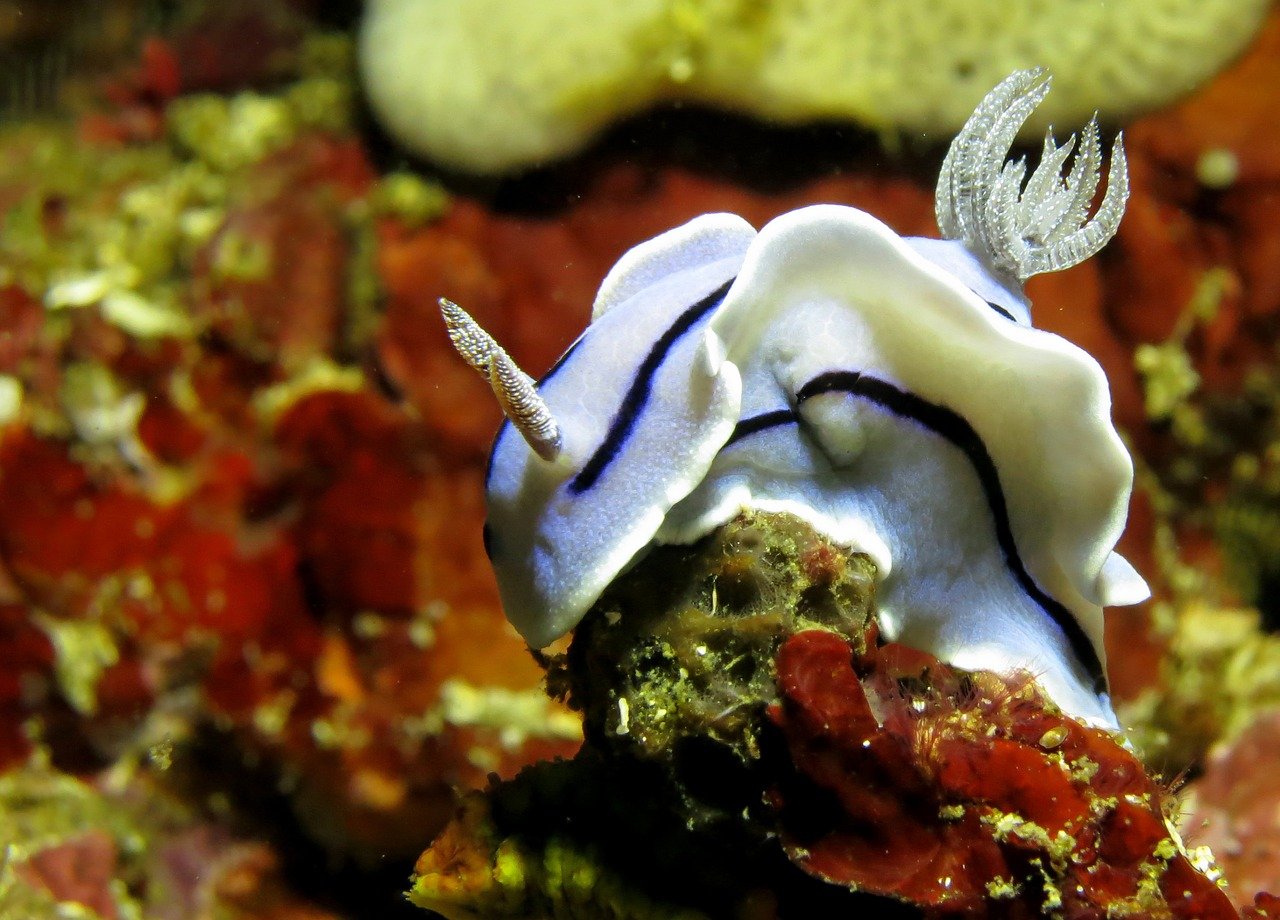
Externally nudibranchs are bilaterally symmetrical, and the two main types of nudibranch (dorid and aeolid) have differing main features. The dorids have distinctive external feathery gills, while the aeolids have cerata found on their back for defense and respiration.
Many species have venomous appendages called cerata to deter predators. These appendages are normally found on the sides. Like all mollusks they have a mouth which houses the radula and a simple gut.
They are hermaphroditic and possess both male and female sex organs, the openings to which are both found on the right side of the body.
In many nudibranch species there is a planktonic free-swimming larval stage called a veliger. Veliger have a coiled shell, but this is lost in metamorphosis into the adult form, when they have the look of the classic sea slug. However some species exhibit direct development and emerge from the egg as miniature adults; in these species the shell is lost developing in the egg. Adults vary between 0.2 to 24 inches in length when fully grown.
Nudibranchs are found throughout marine ecosystems, from the oceans of the Arctic, throughout subtropical and tropical regions, and through to Antarctic waters. The vast majority of nudibranchs are marine, though there are a few species which have ventured into brackish waters. They are found throughout the water column at a range of depths, from the intertidal zone and the waters surface all the way down to over 2300 feet. As with most groups of animals, the greatest diversity of nudibranch species can be found in tropical reef ecosystems.
Primarily benthic creatures, they found crawling over the substrate in search of food. They can be found on sandy, rocky, and coral substrates. There are only three exceptions; nudibrances of the genus Glaucus, which float upside down on the surface, Phylliroe bucephalum, a species of parasitic nudibranch, and Cephalopyge trematoides, a species of pelagic nudibranch.
Nudibranchs have quite primitive eyes, only able to differentiate little more than light and dark; they are only a quarter of a millimeter in diameter and only consist of a lens and five photoreceptors. They have cephalic or head tentacles, which they use to achieve the senses of touch and taste. Cub-shaped rhinophores used to detect odors, which can be seen at the top of the head.
Coloration depends on the species; it can vary wildly and can be very bright and bold or dull and muted.
Nudibranch Life Cycle
Nudibranchs need to find a mate, even though they are hermaphroditic and possess both male and female sex organs, as they cannot fertilize themselves. Mating itself involves a dance-like courtship and usually lasts only a few minutes.
After fertilization eggs are laid in a gelatinous spiral, and the number of eggs laid can vary wildly, from as few as individual eggs to over 25 million. Many eggs contain toxins from the diet of the nudibranch which lays them to deter predation.
Once hatched the larval nudibranchs are called Veliger, which live as pelagic zooplankton until the metamorphose into the adult form. Veliger have a shell, which is then lost in metamorphosis. In many species juveniles emerge from their eggs already looking like miniature adults, the metamorphosis happening in the egg.
Nudibranchs don’t live particularly long; the lifespan ranges from anywhere from a few weeks to up to a year or so, depending on the individual species.
Defence Mechanisms
As nudibranchs have lost the shell that is the primary defence mechanism of the mollusks, they have evolved numerous other defences for fending off would-be predators.
Many nudibranch species have developed camouflage which enables them to blend in almost perfectly with their habitats. Their coloration perfectly mimics the coral and sponge species which they call home.
Other nudibranchs have developed chemical defences to ward off predation. Contrary to what you might think, having these chemical defences designed to be distasteful rather than kill can be more effective, as predators live to tell the tale!
Some species produce distasteful chemicals themselves, while others ‘steal’ them from the sponges on which they eat. The sponges chemicals are then held in their bodies until a predator tries to have a bite.
Similar to this, nudibranchs which feed on cnidarians eat and then repurpose their preys’ nematocysts, the stinging cells, for their own protection. They have mechanisms to protect themselves from the nematocysts, and move them to the dorsal body wall as protection from predators.
Other nudibranchs excrete a mucus which contains an acid to burn and ward off predators.
Feeding and Diet
The diet of nudibranchs depends on the species, although all are known carnivores. Many species feed upon sponges, while others prefer tunicates, and still others like the taste of hydroids.
Some are specific bryozoan feeders, while there are species that are specialized in hunting other nudibranch species. Many others feed on organisms such as anemones and barnacles.
There are highly specialized diets, such as the pelagic genus Glaucus which is specialized in feeding on siphonophores such as the Portuguese man o’ war and other highly venomous species. Not only do the species in this genus specialize in feeding on venomous siphonophores, but they actually repurpose the stinging nematocysts in their own defence.
Nudibranch In the Aquarium
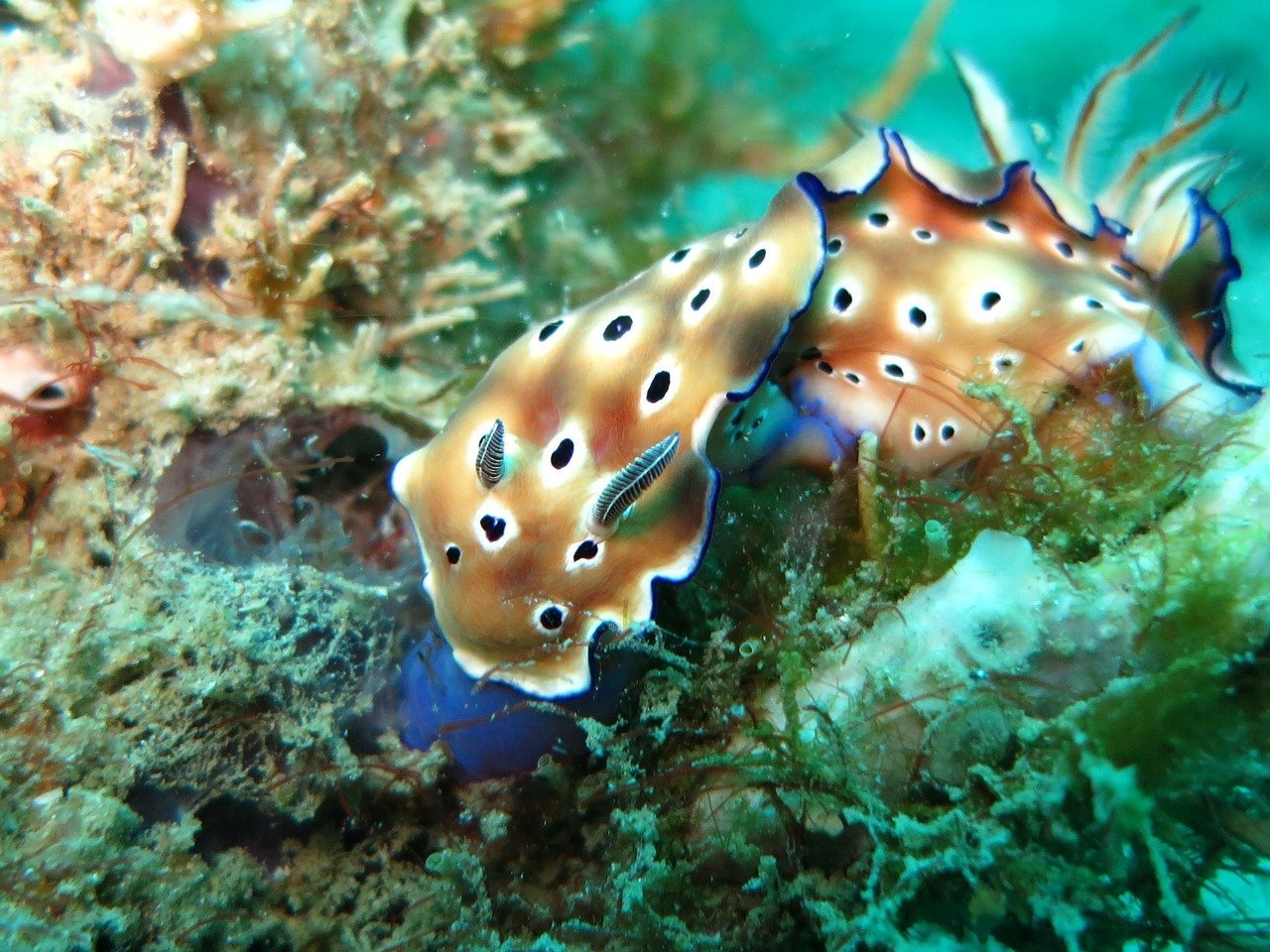
In the main, nudibranchs are not suitable for the home aquarium. Some expert aquarists may want an extra challenge and try and keep these animals, but it is advised against.
Professional aquariums have a hard enough time keeping nudibranchs successfully, and their success rate in reef tanks is incredibly low.
Part of their unsuitability for home reef tanks is that their diet is highly specific. Unlike invertebrates like anemones and corals which will happily eat most things they are given, nudibranchs only feed on a specific prey item. If the nudibranch species isn’t given the exact prey species they require, they simply won’t eat and will starve to death.
Most nudibranchs are considered pests in the aquarium as eggs often wind up in sponge or coral. These are then put into the tank, where the eggs hatch and the nudibranch promptly eats and kills the sponge!
There are some exceptions, but in the main it is advised against trying to keep nudibranchs. Unless you know the exact species of nudibranch you are getting and exactly what it eats then you will be fighting a losing battle.
Not only is actually keeping them a real battle, but even if by a minor miracle you manage to keep them alive, they only live around a year anyway. Overall, they are best left alone!

